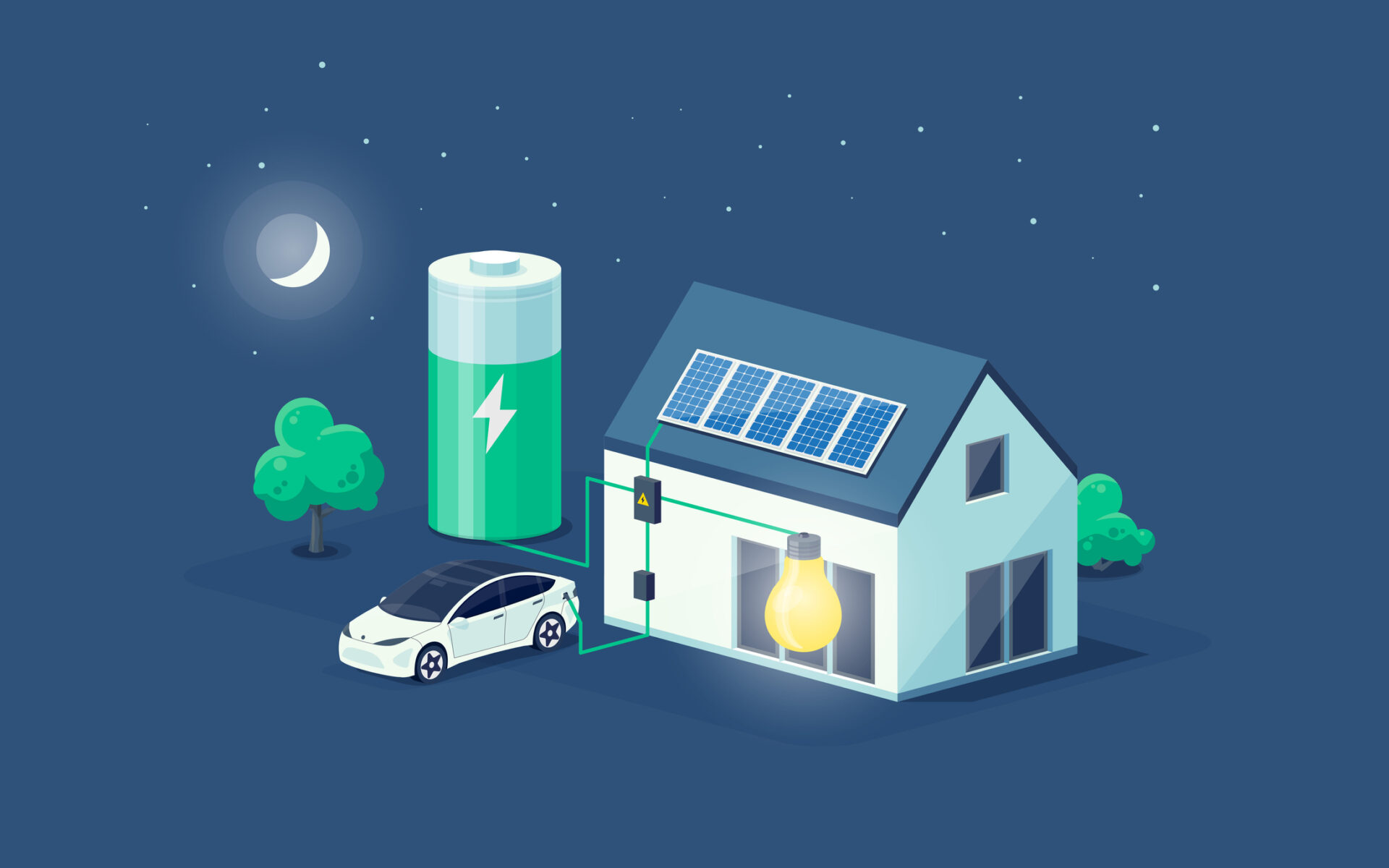What is the purpose of the battery?
The recommendations are based on the assumption that a private house has solar panels, an market price (spot) energy package and the ability to manage production and storage (MarkeDroid service) and an excess energy sales contract accordingly.
If these conditions are met, your home battery will become manageable 365 days in a year, which will maximize your return on investment by up to 50% compared to the market.
What affects the profitability of your battery?
- The biggest impact is the fluctuation of energy exchange hourly prices (spread) over 24 hours, allowing you to buy at a low price and consume or sell to the grid when the price is high, i.e. the greater the fluctuation, the greater your benefit.
- Secondly, the size of the battery, which should be optimal compared to the house consumption, covers at least the 6 most expensive hours in 24 hours.
- We have seen less impact on managing traditional consumption (EV charging excluded) compared to when a house’s energy production and storage is managed smartly. Then the low-priced energy is sourced when it is available and used at premium price times. Managing heating systems etc. the same way is beneficial but managing batteries like this has higher returns.
Backup Solution – Consumption for 1-2 Hours
When it comes to creating a sense of security, the direct financial gain is minimal. This solution is about ensuring that you have power for those critical 1-2 hours when you need it most, such as during a power outage. If that is the primary goal and interruptions are not predictable then advice is to keep your battery close to full all time. Having a 1h consumption worth of battery installed and letting it drop to 30% means that you actually have 12min of backup instead of 1h as batteries keep 10% safety margin usually as well (20% of usable for backup).
So you might end up with a backup strategy that is actually not really a backup nor is it useless for shifting larger energy volumes.
Energy Independence and Low Bills – Consumption for 4-6 Hours
This is the most popular solution, especially for maximum consumption periods like winter. With a battery playing a crucial role, the result is minimal annual energy costs and at least 2 years shorter battery payback time. This solution is about striking a balance between energy independence and cost-effectiveness. In combination with EV it is recommended to stop the home battery from being drained into EV while it charges with such battery sizes.
Charging Electric Cars – 50% of Car Battery Capacity and Consumption for 6+ Hours
This is a premium convenience service that requires a higher than average investment. It allows you to collect cheap energy for both your house and car. While it might be more expensive upfront, the convenience and flexibility it offers can make it a worthwhile investment, especially for electric vehicle owners. It gives you also a flexibility of deciding whether you want to enable discharging your home battery into EV or not. With smaller batteries we do not recommend supplying any energy from home batteries to EV.
Maximizing potential – Ensures Consumption for 8+ Hours
This solution requires a larger initial investment, but it allows for energy production and storage that exceeds home needs. This excess energy can be stored and then sold at maximum price hours to market. Also other energy market services become viable (VPP services for grid). This solution is for those who want to turn their home into a mini power station, not just reducing their energy costs but also being part of smart energy infrastructure as a whole and maximizing your investment potential from all revenue options.
In conclusion, the purpose of your home battery can vary greatly depending on your ambitions and investment capabilities. Whether you’re looking for a backup solution, aiming for energy independence, charging your electric car, or even maximizing all revenue potentials, there’s a battery solution that can meet your needs.


No responses yet